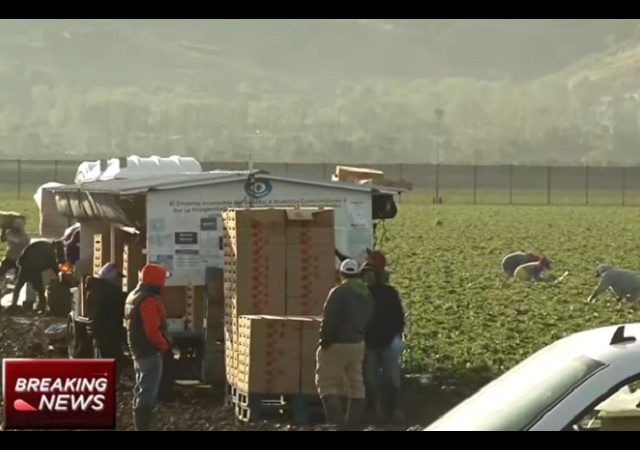Chemical Shortages Affecting U.S. Farms Described as ‘Off the Charts”

A disturbing report by Reuters, featuring interviews with more than a dozen chemical dealers, manufacturers, farmers, and weed specialists, indicates chemical shortages have disrupted U.S. growers’ production strategies and points to reduced harvests this season.
The level of shortages of farm-essential chemicals (e.g., fertilizer, weed-killer) is being described as “off the charts.”
Shawn Inman, owner of distributor Spinner Ag Incorporated in Zionsville, Indiana, said supplies are the tightest in his 24-year career.”This is off the charts,” Inman said. “Everything was delayed, delayed, delayed.”Shortages further reduce options for farmers battling weeds that developed resistance to glyphosate, the key ingredient in the commonly used Roundup herbicide, after decades of overuse in the United Sates.
Another farmer shares his experiences, demonstrating the level of science and forethought in planting fields. It also highlights another component of challenges to farms, which will end up contributing to inflation (and potential food scarcity): EPA over-regulation.
Tennessee farmer Jason Birdsong said he abandoned plans to plant soybeans on 100 acres after waiting months to receive Liberty he ordered from Nutrien Ag Solutions. He ultimately received less than half his order for 125 gallons and planted corn on the land instead. Birdsong said he is better able to control weeds in corn than soybeans.Nutrien (NTR.TO) said numerous events stalled the supply chain during the pandemic and the company provided alternate solutions to customers.Birdsong said he needed Liberty to fight weeds that are resistant to glyphosate in soy fields. He said he ruled out a third option, a dicamba-based herbicide from Bayer, because of extensive federal restrictions on when and where dicamba can be sprayed.”With the dicamba technology being so strict, Liberty is the go-to,” Birdsong said.The Environmental Protection Agency approved new restrictions on dicamba use this year in Iowa and Minnesota, two major farm states.
On the other hand, the US government has approved half a billion dollars for wheat farmers to help with grain shortages that have resulted from Russia’s attack on Ukraine. However, this expenditure may not mitigate all the challenges currently being faced.
Kansas wheat farmer Clay Schemm, who also serves as the President of the Wallace County Farm Bureau, joined “Morning in America” to discuss the obstacles farmers are working to overcome.“Predominantly in our state, especially in the southwest areas, we’ve had extremely hot and dry temperatures. And with the wind just coming through and really increasing the loss of moisture, we’ve been seeing a lot of struggle to get the yield production that we would see on a typical year,” Schemm said.A heat dome over the country has sent temperatures skyrocketing, drying out farmland and making it harder for farmers to produce crops.“But trying to keep up with it when the yields aren’t there just makes for a struggle. I know farmers are doing their best to respond to this food shortage, but with the lifecycle of wheat, it’s hard for a lot of people to respond, and turnaround on a dime and change up those cropping practices,” Schemm said.
If American farmers are hurting, then the rest of the world will follow. The situation is so concerning that U.N. Secretary-General Antonio Guterres warned that the world faces a “catastrophe” because of the growing food shortage across the globe.
“There is a real risk that multiple famines will be declared in 2022,” he said in a video message to officials from dozens of rich and developing countries gathered in Berlin. “And 2023 could be even worse.”Guterres noted that harvests across Asia, Africa and the Americas will take a hit as farmers around the world struggle to cope with rising fertilizer and energy prices.”This year´s food access issues could become next year´s global food shortage,” he said. “No country will be immune to the social and economic repercussions of such a catastrophe.”
Hopefully, valuable lessons about shortening supply chains and strengthening domestic production will be learned and implemented before real food scarcity slams us.
CLICK HERE FOR FULL VERSION OF THIS STORY